Atomic orbitals represent the wave functions that correspond to the solutions to the Schrödinger equation. The orbitals, which do not have specific borders or barriers, represent a volume in space where there is a high probability of finding an electron. The quantum numbers function like an index to give the size, shape, and orientation of the orbitals. Together, the shapes of the orbitals represent the shape of the atom.
Which choice ranks the given orbitals in order of increasing size?
- 1s < 2s < 3s
- 4p < 3s < 2s
- 4p < 3p < 2p
- 3s < 2s < 1s
1 s < 2 s < 3 s
Ex.
The orbitals that are correctly ranked in order of increasing size are 1s < 2s < 3s .
The s orbitals all have a similar, spherical shape, but the size of the orbital increases going from the first energy level ( n = 1) to higher energy levels. Each successive increase in n will result in a successively larger orbital.
What is the wavelength in nanometers of light when the energy is 1.91 × 10 6 J for a mole of photons?
- 961 nm
- 62.7 nm
- 104 nm
- 159 nm
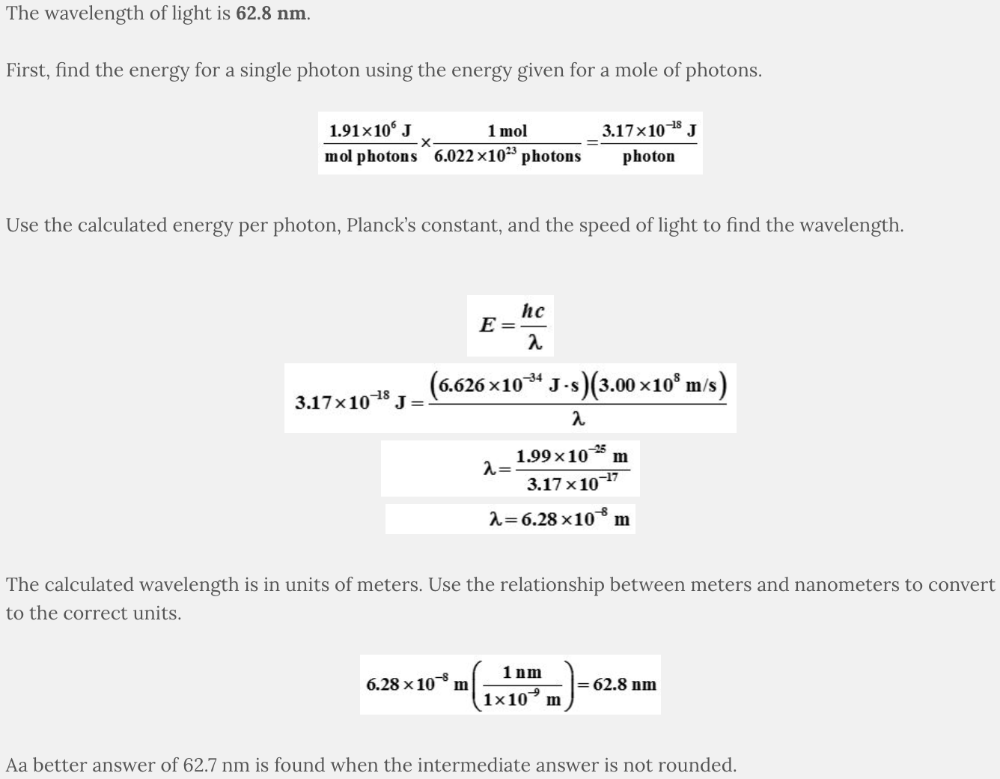
62.7 nm
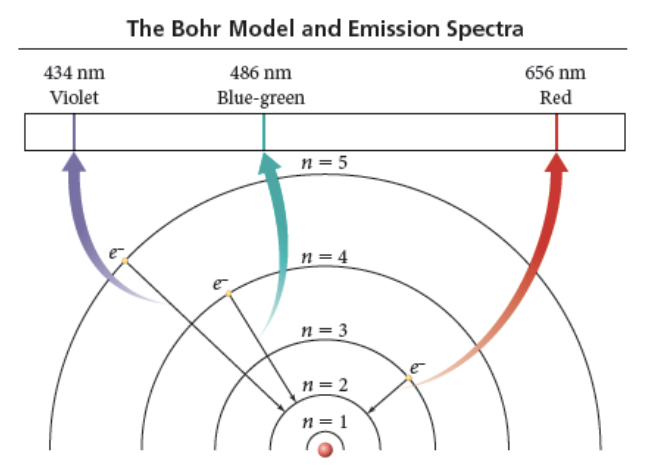
In the Bohr model of the atom, electrons are thought to orbit the nucleus at specific energy levels. Orbits closer to the nucleus are lower in energy than those that are farther from the nucleus.
Which transition emits the shortest wavelength of light?
- n = 3 to n = 1
- n = 4 to n = 1
- n = 2 to n = 1
- n = 5 to n = 1
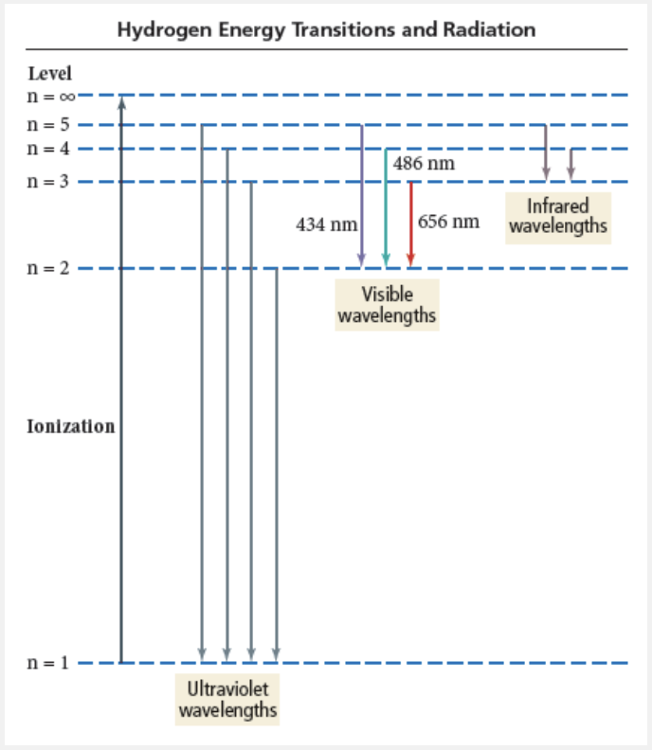
n = 5 to n = 1
Ex.
The transition that emits light with the shortest wavelength is n = 5 to n = 1 .
The energy difference among the given options is the greatest from n = 5 to n = 1, which means it will have the shortest wavelength. Note that in all of the options, the transitions end at n = 1 and begin at higher energy levels.
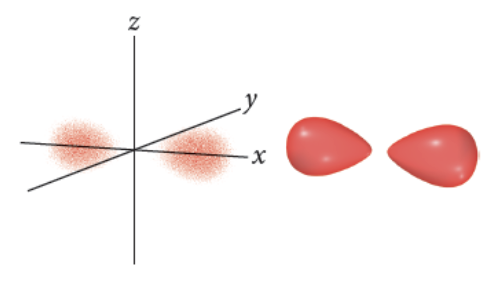
Atomic orbitals represent the wave functions that correspond to the solutions to the Schrödinger equation. The orbitals, which do not have specific borders or barriers, represent a volume in space where there is a high probability of finding an electron. The quantum numbers function like an address to give the location of an electron in one of the orbitals. Together, the shapes of the orbitals represent the shape of the atom.
What type of orbital is pictured here?
- d
- f
- p
- s
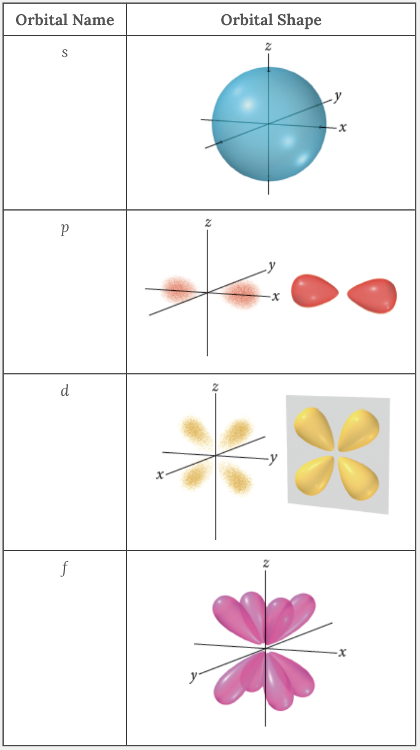
p
Ex.
The pictured orbital is one of the p orbitals. Generalized shapes of the different orbitals are shown here.
Quantum numbers are interrelated values that indicate a specific orbital: the principal quantum number, n ; the angular momentum quantum number, l ; and the magnetic quantum number, m l .
Which one of the following is a disallowed set of quantum numbers?
- n = 2, l = 1, ml = 0
- n = 1, l = 0, ml = 0
- n = 3, l = 2, ml = −2
- n = 2, l = 0, ml = −1

n = 2, l = 0, m l = −1
What is the wavelength in picometers of light with a frequency of 9.3 × 10 18 Hz?
- 310 pm
- 71 pm
- 32 pm
- 140 pm
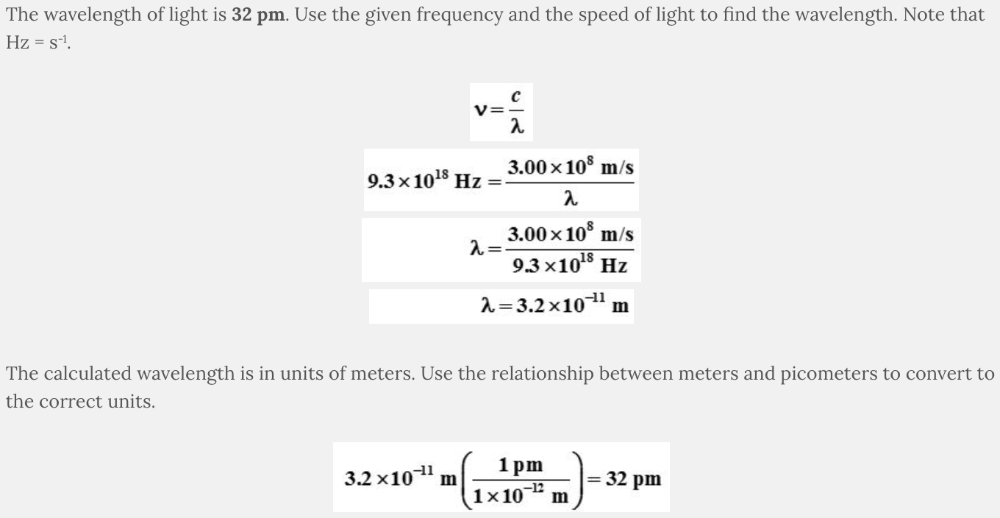
32 pm
The number of waves that pass through a point in a given period of time is known as the __________.
- wavelength
- amplitude
- energy
- frequency
frequency
Ex.
Frequency is the number of waves that pass through a stationary point in a given period of time.
Wavelength is the distance from peak to peak in a wave and amplitude is the vertical height of the wave from the midline to the peak. Energy is a function of the frequency of the wave.
Quantum numbers are interrelated values that indicate a specific orbital: the principal quantum number, n ; the angular momentum quantum number, l ; and the magnetic quantum number, m l .
Which orbital is indicated by the quantum numbers n = 3, l = 2, m l = −1?
- 2d
- 3p
- 3d
- 2p

3 d
Which type of electromagnetic radiation has the longest wavelength?
- Gamma ray
- X-ray
- Visible
- Infrared
- Radio waves
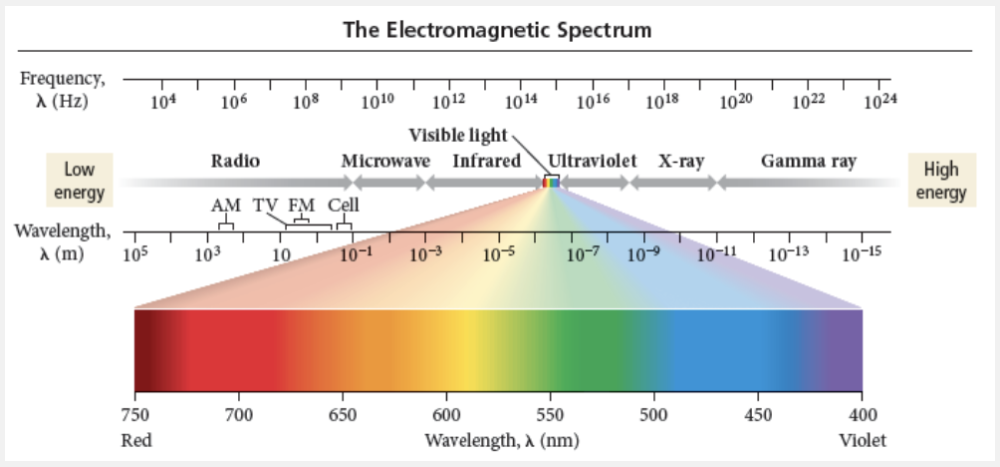
Radio waves
Ex.
Radio waves have the longest wavelength of the types given. As shown on the electromagnetic spectrum, radiation with the lowest frequency and lowest energy has the longest wavelength.
Light is electromagnetic radiation composed of electric and magnetic field components. The electromagnetic spectrum includes light with a range of frequencies, wavelengths, and energies.
As the energy of electromagnetic radiation ________, the frequency _________.
- decreases; increases
- increases; increases
- decreases; stays the same

increases; increases
Ex.
As the energy of electromagnetic radiation increases , the frequency increases . Based on the relationship between frequency and wavelength (see equation and electromagnetic spectrum), the values are directly proportional to one another.
E = h x v
Quantum numbers are interrelated values that indicate a specific orbital: the principal quantum number, n ; the angular momentum quantum number, l ; and the magnetic quantum number, m l .
What are the allowed values for the magnetic quantum number m l ?
- 0, 1,...,n−1
- 1, 2, 3,…
- +½, −½
- −l...0...+l
− l ...0...+ l
Ex.
The permitted values for the magnetic quantum number, m l, are −l,…,0,…,+l, or any integer value between – l and + l .
The permitted values of the quantum numbers are
- n = 1, 2, 3….
- l = 0, 1, 2,…, n −1
- m l = − l ,…,0,…,+ l
What is the wavelength in nanometers of light with a frequency of 2.840 × 10 14 Hz?
- 946.7 nm
- 233.0 nm
- 1056 nm
- 429.2 nm
- 700.0 nm
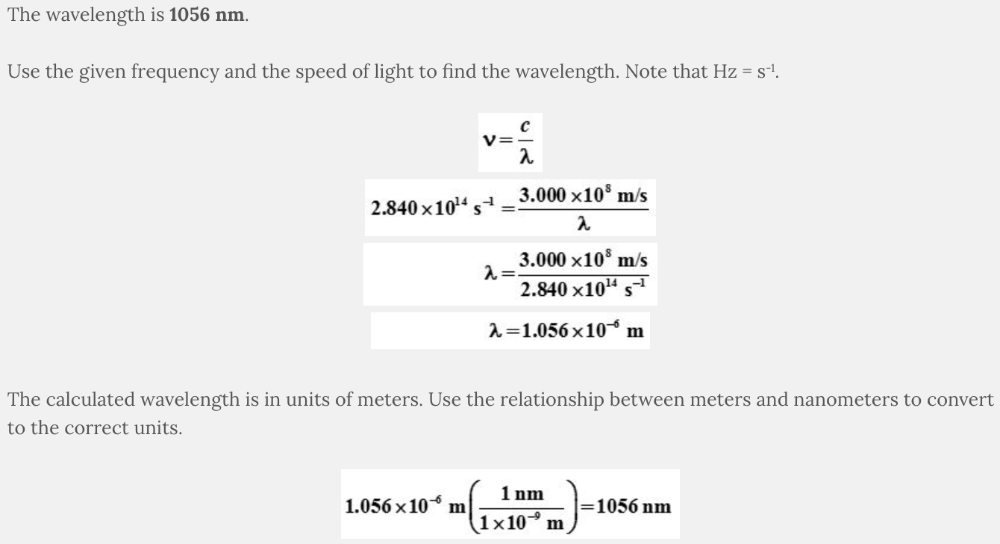
1056 nm
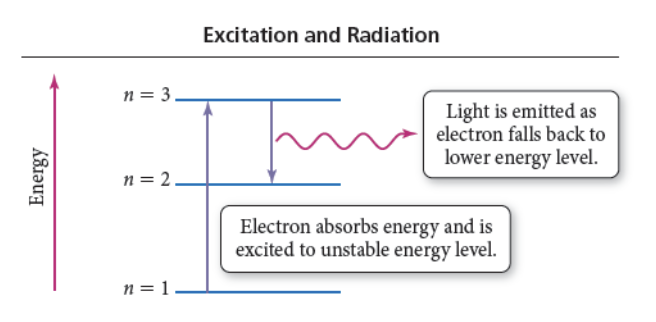
The Rydberg constant applies to the hydrogen atom and allows the calculation of the energy of light emitted or absorbed. Light is absorbed when electrons are promoted from a lower energy level to a higher energy level. Light is emitted when electrons relax from a higher energy level back down to a lower energy level.
Light with a wavelength of 1282 nm is emitted by an electron, which relaxes to the n = 3 level. In which level did it start?
- n = 7
- n = 6
- n = 4
- n = 5
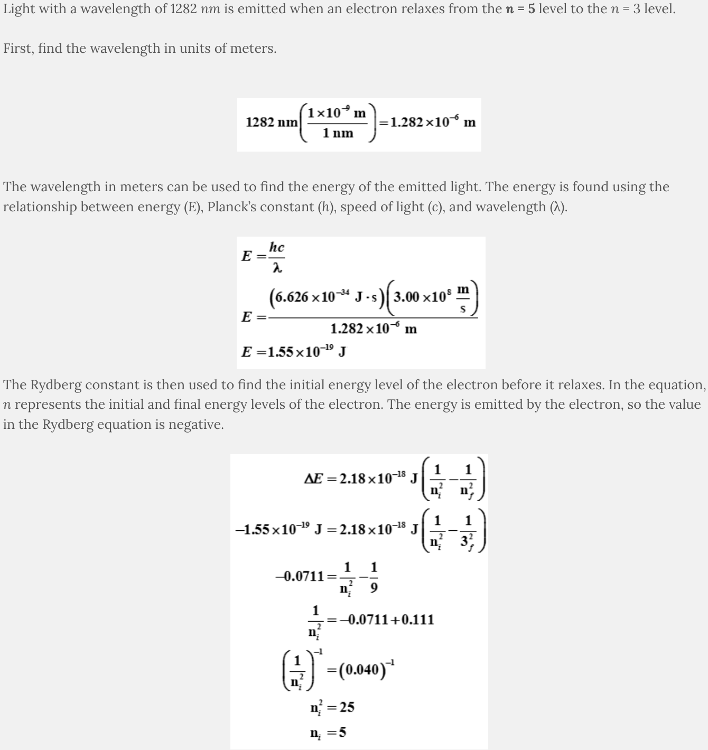
n = 5
Quantum numbers are interrelated values that indicate a specific orbital: the principal quantum number, n ; the angular momentum quantum number, l ; and the magnetic quantum number, m l .
How many orbitals can have quantum numbers of n = 3 and m l = −1?
- 3
- 4
- 1
- 2
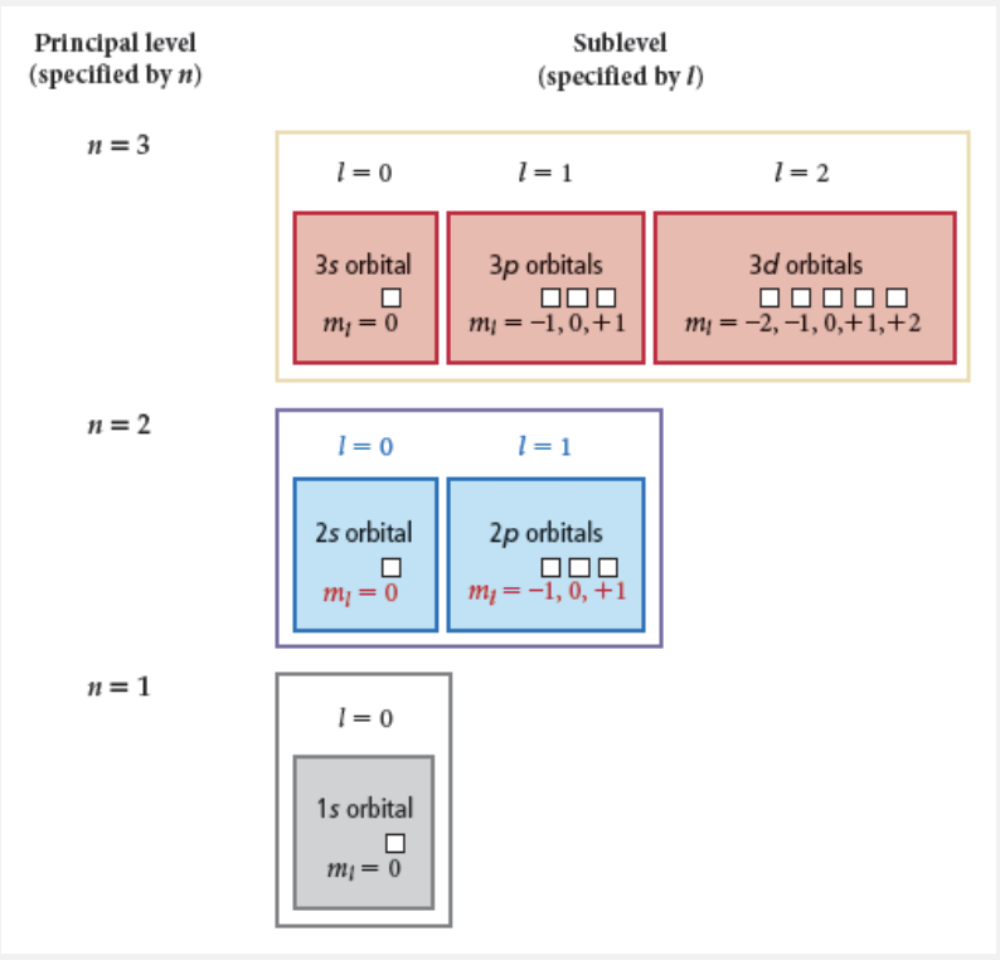
2
Ex.
For n = 3 and m l = −1, there are 2 orbitals: one of the 3p and one of the 3d orbitals.
When n = 3, l has possible values of 0, 1, and 2. For l = 0, the only possible value of m l is 0. For l =1, m l has values of −1, 0, and 1. For l = 2, m l has values of −2, −1, 0, 1, and 2. Therefore, there are only two orbitals with n = 3 and m l = −1.
The de Broglie equation relates the wavelength and the kinetic energy of particles. What is the mass of a particle with a speed of 2.34 × 10 6 m/s with a de Broglie wavelength of 2.25 × 10 - 9 m ?
- 6.39 × 10-49 kg
- 7.95 × 1030 kg
- 1.26 × 10-31 kg
- 6.89 × 10-19 kg
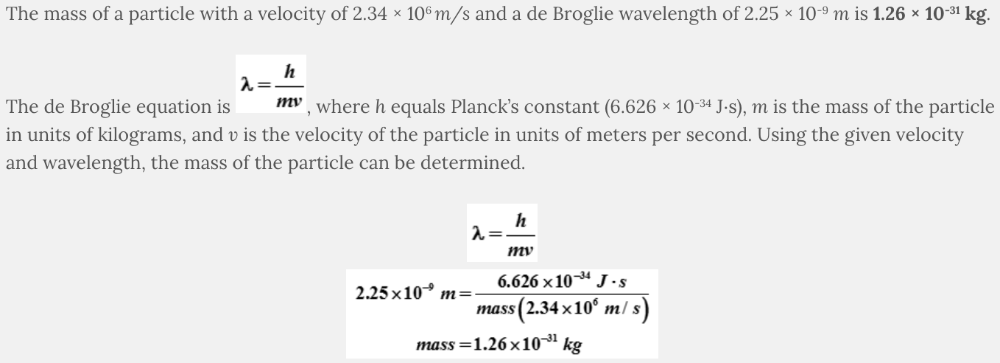
1.26 × 10 -31 kg
What is the frequency of light when the energy for a mole of photons is 1.55 × 10 13 J?
- 6.18 × 1021 Hz
- 1.03 × 1020 Hz
- 2.58 x 1023 Hz
- 3.88 × 1022 Hz
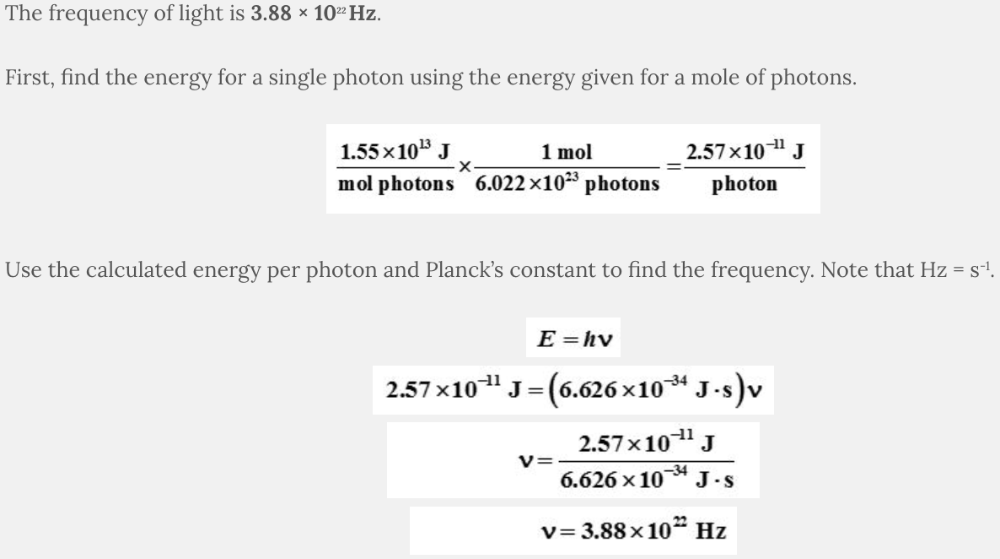
3.88 × 10 22 Hz
What is the energy of a single photon of light that has a wavelength of 454 nm?
- 4.38 × 10-19 J
- 4.38 × 10-37 J
- 4.38 × 10-3 J
- 4.38 × 10-33 J
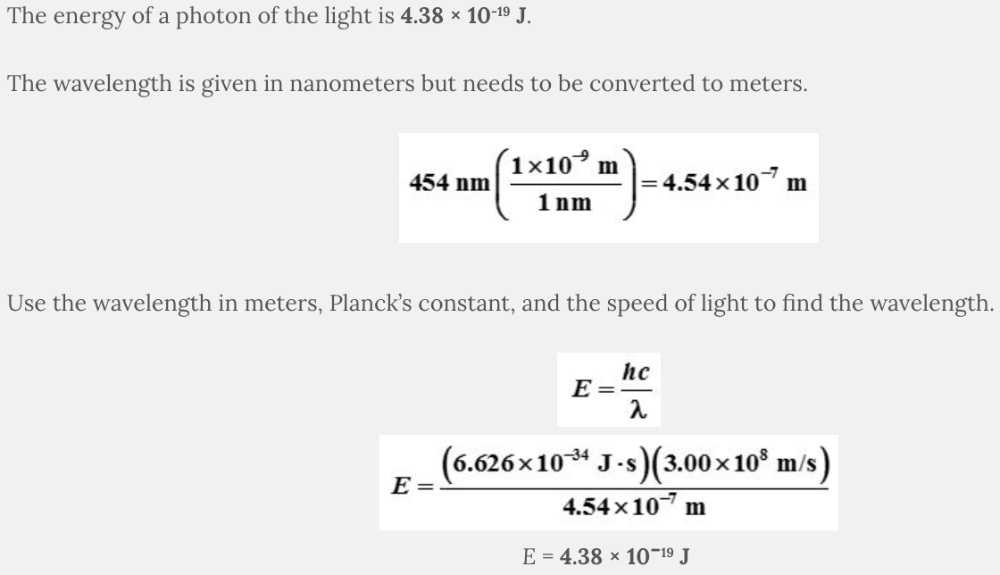
4.38 × 10 -19 J
What is the energy of a single photon of light that has a frequency of 9.28 x 10 22 Hz?
- 6.15 × 10-11 J
- 3.71 × 1013 J
- 1.29 × 10-24 J
- 3.23 × 10-15 J
- 7.14 × 10-57 J

6.15 × 10 -11 J